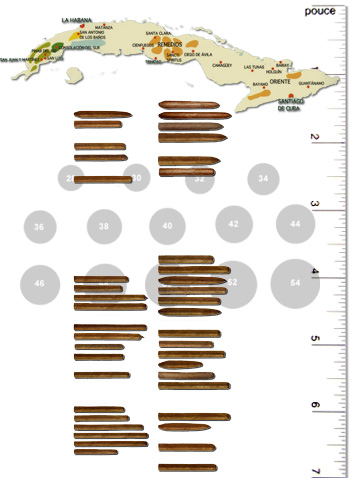Newcomers

Newcomers to Cuban Cigars
While several countries have proved adept at producing quality cigars, no region in the world matches Cuba's fertile soil and unique microclimate: factors that ultimately determine the singular quality of Cuban cigars.
Likewise, no region mirrors the centuries-old culture of cultivating tobacco-methods that were pioneered in 1817, when Spain's King Ferdinand issued a royal decree legalizing the production and sale of tobacco in Cuba.
Cigar production on the island nation has changed very little since then.
Aficionados often cite Cuba's curing process and the unparalleled expertise of the island's cigar rollers, who work entirely by hand. The rolling skills of the Torcedores, literally "twisters", also set Habanos apart from the competition. There are four levels of Torcedores, and only those in the top grade are allowed to make the most complicated Habanos.
Most Cuban tobacco is grown on the island's Vuelta Abajo region, in the province of Pinar del Rio, southwest of Habana. This area profits from atmospheric conditions that lend its tobacco special flavors, which many say are the world's finest.
Elite farms in the Vuelta Abajo region, known as the Vegas Finas de Primera, produce an astonishing variety of flavors that result in the island's 33 brands, with 240 varieties. Farmers are typically in charge of half a million plants, each of which must be visited over 150 times during the nine-month growing process. Once plants are ready to harvest, each leaf is picked by hand, two or three leaves at a time.
The eye-opening variety of tobacco generated in this geographical area is simply unmatched and provides the vast array of filler tobacco needed to attain the rich, aromatic blends that Habanos offer.

